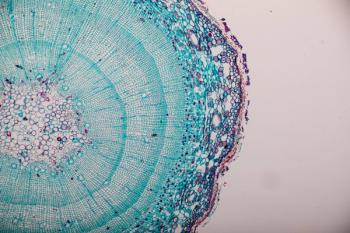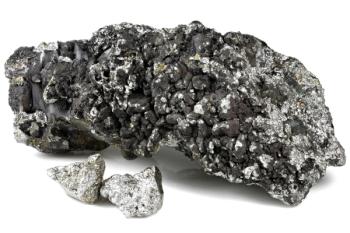
Here are the top five articles that the editors of Spectroscopy published this week.

Here are the top five articles that the editors of Spectroscopy published this week.

A recent study offers an inside look as to how chemometric modeling is directly impacting greener analytical solutions.

Scientists from Nanjing Forestry University recently used a portable hyperspectral imager to help detect maturity stages in Camellia oleifera fruits.

A recent study led by Detlef Gunther examined using laser ablation with inductively coupled plasma time-of-flight mass spectrometry (LA-ICP-TOF-MS) in quantifying elements in biotissues of plants.

Here are the top five articles that the editors of Spectroscopy published this week.

Chinese scientists recently combined confocal microscopy and an echelle-grating spatial-heterodyne Raman spectrometer (CM-ESHRS) to create a new system for detecting microplastics.

Scientists at the Analytica conference in Munich, Germany delivered lectures on using techniques such as Raman and tunable diode laser absorption spectroscopy to analyze gas in the environment.

Scientists from Zhenjiang, China recently tested different analysis methods of using portable near-infrared (NIR) spectroscopy to detect Bombyx mori nuclear polyhedrosis virus within silkworms.

Scientists in Poland recently tested how multidimensional discriminant analysis and reflectance spectroscopy can help identify species within fungi strains.

In a recent journal article, scientists wrote about on the impact machine learning algorithms have in measuring water quality, and how this technology can be evolved further.

Scientists from East China Jiaotong University recently tested different sample selection methods using near-infrared (NIR) spectral information entropy as a similarity criterion.

The company’s new service will provide expedited testing to customer around the world.

Here are the top five articles that the editors of Spectroscopy published this week.

In a study led by scientists from Northwest University in Xi’an, China, carbon quantum dots were tested on how well they can detect hypochlorite and aid in cellular imaging.

In a recent study from Ghent University and Charles University, scientists analyzed layered manganese oxide structures using different Raman spectroscopy techniques.

In a recent study, researchers from China investigated the effects of incorporating environmental markers into toxicity prediction models.

Metrohm USA announced Katelyn Michael as the 2024 winner of its Young Chemist Award for her work on the degradation of perfluorooctanesulfonic acid (PFOS).

Heavy metals in soil remains one of the most pressing issues in environmental conservation efforts. According to the authors of a new study, laser-induced breakdown spectroscopy (LIBS) can contribute to the solution.

Yan’an University researchers publish findings in Spectrochimica Acta Part A: Molecular and Biomolecular Spectroscopy about three new luminescent coordination polymers that could be used in environmental protection efforts.

A new study presents how the isoquinoline core (IQ) could be used to better detect mercury ions in the environment and help safeguard human health.

In this paper, a one-time digestion method for the determination of arsenic (As), antimony (Sb), selenium (Se), and mercury (Hg) in geological samples was established.

In this peer-reviewed article, the research team presents a kinetic fluorescence method suitable for the determination of trace Ni(II) in water samples.

Researchers from the University of Szczecin and other Polish institutions have applied the power of machine learning, employing various models, to forecast optimal microbial strains for mitigating drought impacts on crops, marking a leap toward sustainable agriculture to ensure global food security.

Scientists from Zhejiang A&F University and Huzhou University in China recently created a new time series prediction model that combines linear and nonlinear prediction methods.

Jörg Feldmann, a professor at the University of Graz, spoke about his team’s research using non-target analysis to analyze per- and polyfluorinated substances (PFAS).